1Ah to kWh Conversion for Battery
Table of Contents

1Ah to kWh
1Ah is often used to indicate the capacity of a battery. Ah stands for Amp-hours and alone cannot well represent the actual capacity of a battery. This article will briefly explain how to convert 1Ah to 1kWh, so as to better help you understand and calculate the runtime of a UPS battery or solar battery.
Ah or Amp-hours often appears in battery
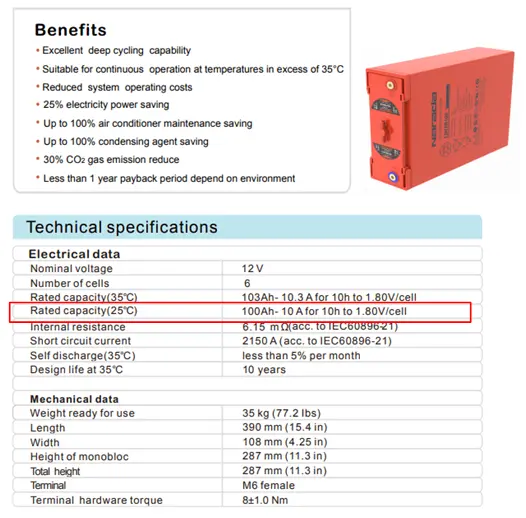
The picture above is a typical lead-acid battery. We can see that its capacity is marked as 100Ah. Also note that its nominal voltage is 12V.
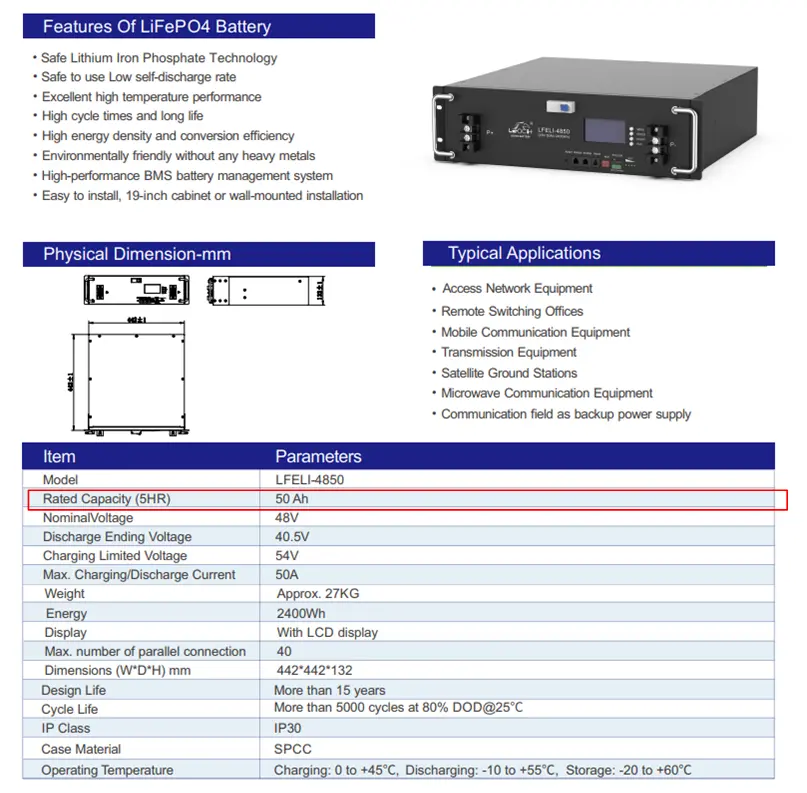
The picture above is a lithium battery. Its capacity is marked as 50Ah and its nominal voltage is 48V.
So can we judge that the capacity of a 50AH battery is smaller than that of a 100AH battery? Not really , let us explain step by step.
Understand kWh
First of all, we need to understand that kWh is the basic unit for measuring electricity. You can understand that Kwh is the unit we use to pay our electricity bills. So how much electricity does a battery have? The standard unit should be how many kWh it has. So how is kWh defined? Let’s understand:
The kilowatt-hour is a composite unit of energy equal to one kilowatt (kW) sustained for (multiplied by) one hour.
Source:Kilowatt-hour
This explanation is very theoretical and difficult to understand, so let’s try to draw a picture to explain it.
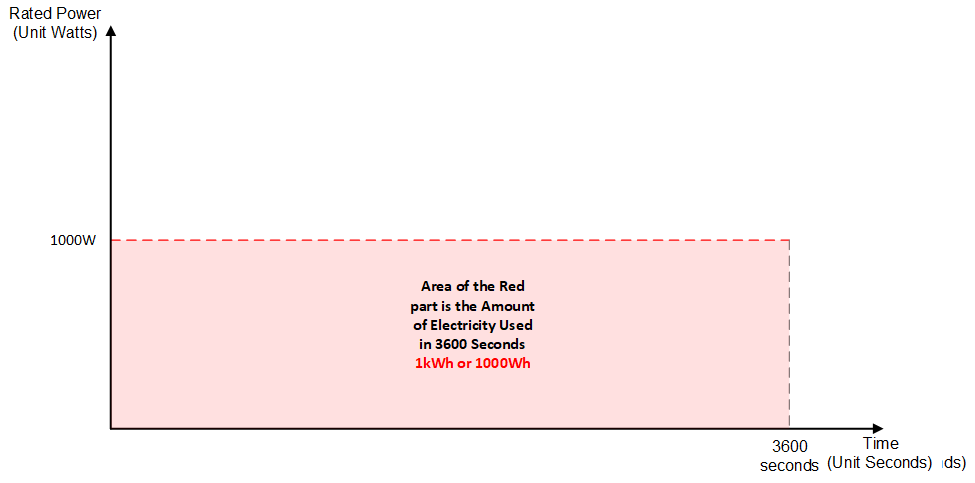
First of all, we need to clarify a concept, 1kWh = 1000Wh, which will be used in subsequent calculations.
The above picture is the explanation of 1kWh,or we say is 1000Wh.First, we split the word Kilowatt-hour into two words, Kilowatt and hour. In fact, Kilowatt means that the rated power of our device is 1000w, and one hour is converted to second, which is 3600 seconds. So 1 Kilowatt-hour is actually the amount of electricity consumed by a device with a rated power of 1000W running for 3600 seconds. So it can be simply understood that 1000W is the amount of electricity consumed by this device per second, representing the instantaneous state of electricity consumed by this device at this second. And 1 Kilowatt-hour refers to the electricity consumed by this device after running for one hour, which is the cumulative total amount of one hour.
If we put aside this issue and understand it as the water flow rate and the total amount of water that finally flows out:
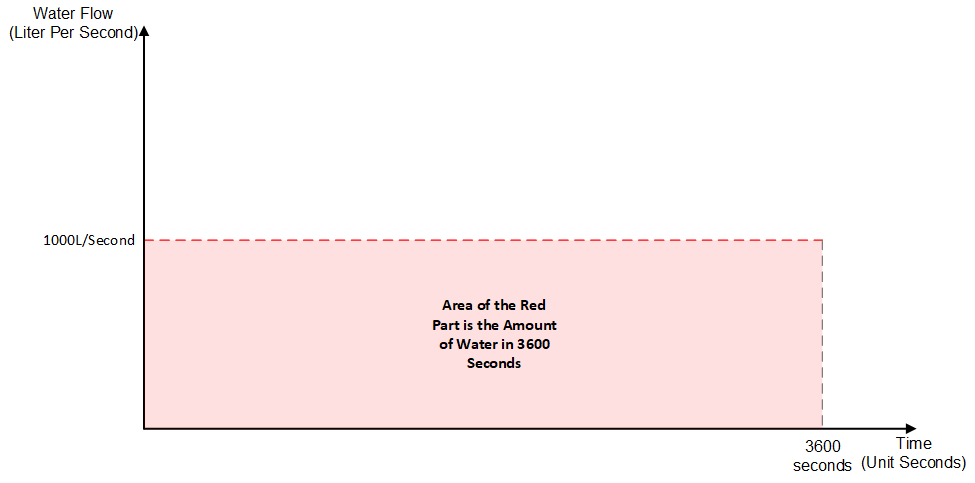
In fact, it is similar to the water flow rate and the total amount of water that finally flows out. If the water flow rate is 1000L/Second, this speed represents the instantaneous state of the water flow rate in one second. And this instantaneous state of the water flow rate needs to be multiplied by the time the water flows out to get the total amount of water that finally flows out. If you want to calculate how much water flows out in an hour, you need to multiply the water flow rate 1000L/Second by 3600 seconds (one hour) to get the total amount of water that finally flows out.
So if we imagine the 1000W device reated power as the water flow rate and Kwh as the total amount of water that finally flows out, isn’t it much easier to understand?
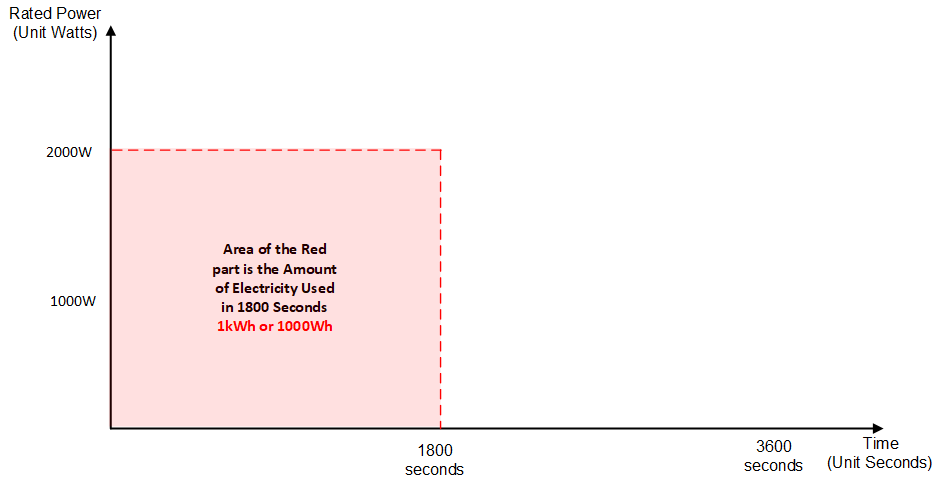
Let’s change the understanding of the above picture a little bit. We have a device with a rated power of 2000W. It runs for half an hour (1800 seconds). How many kWh does it consume? From the above picture, we can see that it is actually 1kWh. Again, 1kWh is the cumulative value of the power consumed by a device in an hour. In the example above, although the device only runs for the first half hour and does not run for the second half hour, its cumulative power consumption for one hour is still 1kWh.
1Ah to kWh Conversion
To compare the capacity of two batteries, we first need to convert them into a parameter standard. That is, convert 1Ah into kWh, and then compare them. Let’s talk about the conclusion first. The calculation formula of the battery’s kWh is as follows:
Battery Capacity(In Wh) = Battery Voltage * Battery Amp-hours
Battery Capacity(In kWh)= Battery Capacity(In Wh) /1000
Please note that 1000Wh = 1kWh


According to the above picture, we read the battery voltage or the nominal voltage, as 12V. And its battery amp-hours is 100Ah. Then, substituting it into the above formula, we can get the following calculation:
Battery Capacity(In Wh) = Battery Voltage * Battery Amp-hours
= 12V*100Ah
= 1200Wh
Battery Capacity(In kWh)= Battery Capacity(In Wh) /1000
= 1200Wh/1000
=1.2kWh
According to the above picture, we read the battery voltage or the nominal voltage, as 48V. And its battery amp-hours is 50Ah. Then, substituting it into the above formula, we can get the following calculation:
Battery Capacity(In Wh) = Battery Voltage * Battery Amp-hours
= 48V*50Ah
= 2400Wh
Battery Capacity(In kWh)= Battery Capacity(In Wh) /1000
= 2400Wh/1000
=2.4kWh
Based on the above calculations, we can know that the capacity of the first lead-acid battery is smaller than that of the second lithium battery.
So please note that the unit of Ah cannot fully represent the capacity of the battery, and the battery voltage factor needs to be considered. So when we are asked to convert 1AH to kWh, we need to add the battery factor to the calculation. And flexibly apply this formula:
Battery Capacity(In Wh) = Battery Voltage * Battery Amp-hours
Battery Capacity(In kWh)= Battery Capacity(In Wh) /1000

